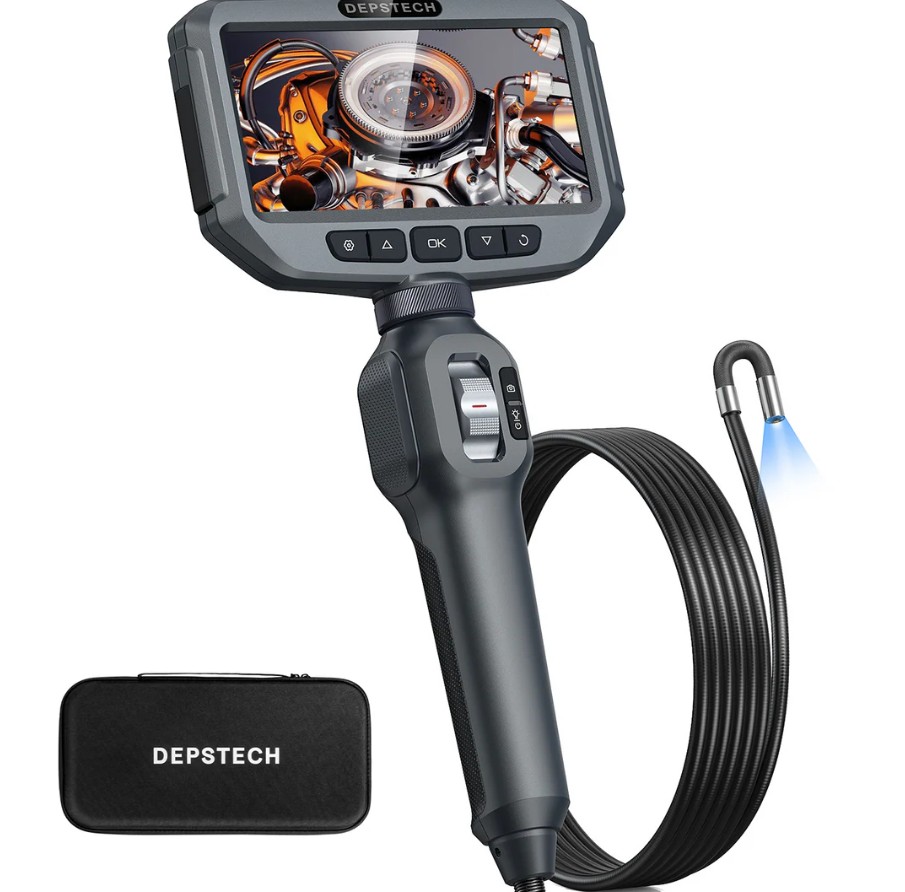
In industrial and mechanical inspection work, precision and accessibility are crucial. When inspecting confined, complex, or delicate components, the ability to see clearly without dismantling equipment can save time, reduce costs, and improve safety. Professionals in a variety of industries have found the 4mm videoscope to be a handy instrument among those made to satisfy these demands.
Its compact design and advanced imaging capabilities make it ideal for use in environments where space is limited and accuracy is non-negotiable. From aviation and automotive to plumbing and manufacturing, this small but powerful tool is changing the way inspections are performed.
Contents
Designed For Tight Spaces
One of the primary advantages of a 4mm inspection tool is its ultra-slim profile. The 4mm diameter allows it to easily navigate through narrow pipes, intricate machine parts, and small-diameter cavities without the need for invasive procedures. This is especially helpful in sectors like electronics and aerospace, where it may be difficult or impossible to disassemble a component for visual inspection without causing damage to the object.
The compact nature of the device makes it perfect for reaching areas that were once considered inaccessible. Whether it’s a turbine engine, a heat exchanger, or the internal components of a medical device, a slim inspection tool can provide a clear view where larger instruments cannot.
High-Quality Imaging
Despite its small size, the 4mm tool delivers impressive visual clarity. Equipped with advanced optics and high-resolution sensors, it provides detailed images that allow technicians and engineers to detect even the smallest cracks, corrosion spots, or foreign objects. Many units also offer LED lighting, which illuminates dark internal spaces for enhanced visibility.
This level of clarity is essential in applications where missing a minor defect can lead to major consequences. Engineers depend on precise visual feedback to make informed decisions, and this tool delivers exactly that.
Flexibility And Control
One important aspect of contemporary inspection tools is their ease of use. The 4mm option typically includes articulating tips, allowing the user to steer the camera head in multiple directions with precise control. This flexibility helps users explore around corners, past bends, or behind obstacles without repositioning the entire instrument.
Operators can direct the scope exactly where it’s needed and capture both still images and videos for analysis or documentation. This not only improves inspection accuracy but also enhances workflow efficiency.
Non-Destructive Testing Made Easy
In many cases, inspection is part of a non-destructive testing (NDT) protocol. NDT ensures that components are evaluated without being harmed, which is critical for maintaining safety and function. The small-diameter inspection device is well-suited for this purpose, enabling a visual assessment without altering the integrity of the equipment being evaluated.
From pipeline inspections to mechanical assemblies and weld joints, professionals can diagnose issues while keeping systems intact, avoiding costly disassembly or rework.
Portability And Field Readiness
Another benefit of these compact tools is their portability. Lightweight and easy to carry, the device can be used in the field, on the production floor, or even in remote locations. Many models come with handheld displays, rechargeable batteries, and durable protective cases, making them convenient for a range of work environments.
This portability is especially useful for field service technicians who need to perform inspections on-site, often under time constraints. It ensures that inspections can be done promptly and efficiently, regardless of location.
Versatile Applications
The extensive range of uses for the 4mm inspection device adds to its value. In the automotive industry, it can be used to check engine interiors, cylinders, and exhaust systems. In HVAC systems, it helps identify blockages or damage within ductwork. In industrial settings, it aids in routine maintenance, fault detection, and quality control.
It is also valuable in aviation, marine, and power generation sectors—anywhere internal inspection is required without invasive measures.
Conclusion
As machinery and technology become more compact and intricate, the need for equally advanced inspection tools continues to grow. The 4mm videoscope meets this demand with its combination of size, functionality, and clarity. By allowing professionals to inspect hard-to-reach areas quickly and accurately, it supports better decision-making, safer operations, and more efficient maintenance practices. For anyone working in technical, mechanical, or industrial inspection roles, this compact tool is an investment in precision and performance.